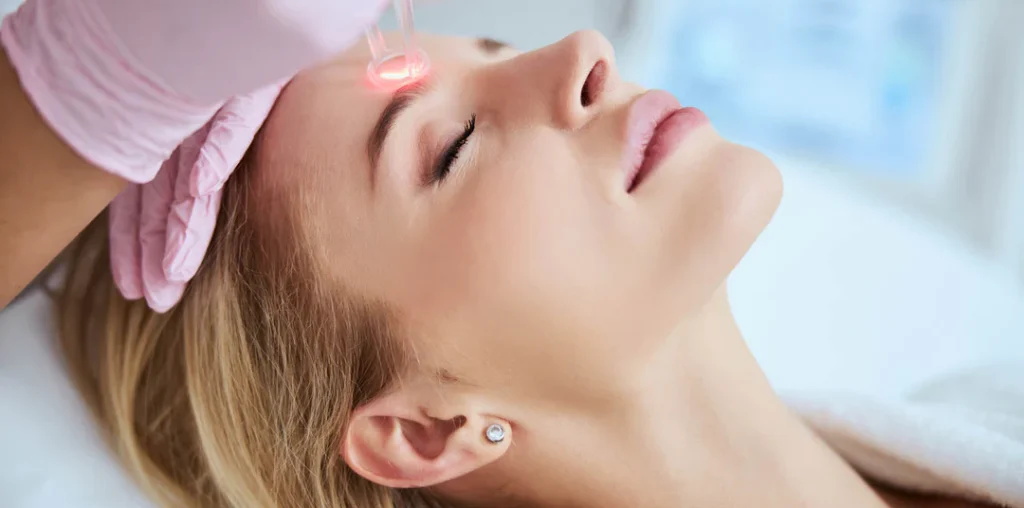Skin aging, sun damage, acne scars, and pigmentation issues are among the most common skin concerns. These problems often leave individuals seeking effective treatments to restore a youthful, radiant appearance. One of the most advanced and effective methods available today is Fractional Skin Resurfacing. This cutting-edge treatment helps to rejuvenate the skin by targeting specific areas without damaging the surrounding tissue, offering significant improvements with minimal downtime.
In this comprehensive guide, we will explore what fractional skin resurfacing is, how it works, its benefits, potential risks, and what you can expect before, during, and after the procedure.
What is Fractional Skin Resurfacing?
Fractional skin resurfacing is a non-invasive laser treatment designed to improve the texture and tone of the skin. Unlike traditional laser resurfacing, which treats large areas of the skin, fractional skin resurfacing works by targeting tiny areas or “fractions” of the skin. The laser creates microscopic wounds, prompting the skin to heal and regenerate while leaving the surrounding tissue intact.
This approach allows for faster healing and reduces the risk of side effects, making it a popular choice for those looking to reduce the appearance of wrinkles, acne scars, pigmentation issues, and sun damage.

How Does Fractional Skin Resurfacing Work?
The technology behind fractional skin resurfacing is based on laser energy that penetrates the skin’s surface. The laser beam is divided into thousands of microscopic treatment zones, targeting the damaged skin cells while leaving the surrounding healthy tissue untouched.
The laser energy stimulates the body’s natural healing process, promoting collagen production and cell renewal. As a result, new, healthier skin cells replace the damaged ones, leading to smoother, firmer, and more youthful-looking skin.
Types of Fractional Skin Resurfacing
There are two primary types of fractional skin resurfacing: ablative and non-ablative. Both are effective, but they differ in terms of intensity, downtime, and results.
- Ablative Fractional Resurfacing
- How it works: Ablative lasers remove the top layer of skin (the epidermis) and heat the underlying skin (the dermis). This aggressive method encourages significant skin renewal and collagen production, resulting in dramatic improvements.
- Ideal for: Deep wrinkles, severe sun damage, and noticeable skin texture issues.
- Downtime: Typically 1-2 weeks for full recovery, as the skin needs time to heal from the deeper resurfacing.
- Non-Ablative Fractional Resurfacing
- How it works: Non-ablative lasers target the dermis without damaging the outer layer of skin. The procedure is gentler, focusing on stimulating collagen production without removing skin layers.
- Ideal for: Fine lines, minor pigmentation issues, and those who want a treatment with minimal downtime.
- Downtime: Minimal, usually a few days with only slight redness or swelling.
Benefits of Fractional Skin Resurfacing
Fractional skin resurfacing offers a range of benefits that make it an attractive option for people looking to improve their skin’s appearance. Some of the most notable benefits include:
- Minimal Downtime
- Compared to traditional skin resurfacing treatments, fractional skin resurfacing typically requires less recovery time. Patients can usually return to their normal activities within a few days.
- Stimulates Collagen Production
- The laser energy used in fractional resurfacing stimulates collagen production, which is essential for maintaining firm, youthful skin. Collagen helps reduce wrinkles, improve skin elasticity, and promote a healthy glow.
- Improves Skin Tone and Texture
- This treatment is highly effective at addressing a variety of skin concerns, including acne scars, enlarged pores, rough skin texture, and uneven pigmentation. It helps achieve smoother, more even skin.
- Versatile Treatment
- Fractional skin resurfacing can be used to treat a variety of skin conditions, including fine lines, wrinkles, age spots, sun damage, and scars. It is also safe for use on different areas of the body, such as the face, neck, chest, and hands.
- Customizable to Individual Needs
- The treatment can be tailored to each individual’s unique skin concerns and desired results. By adjusting the intensity and depth of the laser, practitioners can provide a highly personalized treatment plan.
Who is a Good Candidate for Fractional Skin Resurfacing?
While fractional skin resurfacing is an effective treatment for many people, it is not suitable for everyone. Ideal candidates typically have:
- Mild to moderate skin imperfections, such as fine lines, wrinkles, acne scars, or pigmentation issues.
- Realistic expectations about the outcome of the procedure.
- Healthy skin without any active infections or inflammatory conditions (e.g., rosacea).
- No recent use of isotretinoin (a medication for severe acne), as this can increase the risk of complications.
It’s important to consult with a dermatologist or cosmetic surgeon to determine if fractional skin resurfacing is the right treatment for you.
The Procedure: What to Expect
Before undergoing fractional skin resurfacing, it’s essential to have a thorough consultation with your provider. During this consultation, your skin will be examined, and your medical history will be reviewed to ensure that the treatment is safe and appropriate for your skin type and concerns.
Here’s what you can expect during the procedure:
- Preparation
- Your skin will be cleaned, and a topical anesthetic may be applied to minimize discomfort during the treatment.
- Laser Treatment
- The fractional laser device will be moved across the treatment area, delivering precise laser energy to the skin. The sensation may feel like a series of small pinpricks or heat, but it is generally well-tolerated by most patients.
- Post-Treatment Care
- After the procedure, your skin may appear red, swollen, and slightly irritated, similar to a sunburn. Your provider will give you detailed aftercare instructions to follow, which may include applying soothing ointments and avoiding sun exposure.
- Healing Process
- Over the next few days, your skin will begin to heal. You may experience flaking or peeling as the damaged skin is replaced by new, healthy skin. Most patients see noticeable improvements in their skin within 1-2 weeks, with continued enhancements over the next few months as collagen production increases.
Risks and Side Effects
While fractional skin resurfacing is generally safe and effective, it does come with some potential risks and side effects. These can include:
- Redness and Swelling
- Some redness and swelling are normal after the treatment, but they typically subside within a few days.
- Hyperpigmentation or Hypopigmentation
- In some cases, fractional laser resurfacing can cause temporary darkening (hyperpigmentation) or lightening (hypopigmentation) of the treated skin, especially in individuals with darker skin tones.
- Infection
- Although rare, there is a slight risk of infection following the procedure. It’s important to follow post-treatment care instructions to minimize this risk.
- Scarring
- Fractional resurfacing is less likely to cause scarring than traditional laser treatments, but in very rare cases, scarring can occur.
Post-Treatment Care and Recovery
After undergoing fractional skin resurfacing, proper post-treatment care is essential for optimal results. Follow these tips to ensure a smooth recovery:
- Avoid Sun Exposure
- Sun exposure can increase the risk of complications and affect the results of the treatment. Be sure to apply a broad-spectrum sunscreen with an SPF of 30 or higher and avoid direct sun exposure.
- Stay Hydrated
- Drink plenty of water to keep your skin hydrated and promote healing.
- Use Gentle Skincare Products
- Avoid harsh cleansers and exfoliants during the recovery period. Stick to gentle, hydrating products that won’t irritate your skin.
- Don’t Pick or Scrub the Skin
- As your skin heals, it may peel or flake. Resist the urge to pick at the skin, as this can lead to scarring or infection.
Conclusion
Fractional skin resurfacing is a revolutionary treatment that offers significant improvements in skin texture, tone, and overall appearance. By stimulating collagen production and promoting cell renewal, it provides long-lasting results with minimal downtime. Whether you’re looking to reduce fine lines, fade acne scars, or even out your skin tone, fractional skin resurfacing could be the ideal solution.
However, like any cosmetic procedure, it’s important to consult with a qualified professional to determine if this treatment is right for you. With proper care and guidance, fractional skin resurfacing can help you achieve radiant, youthful skin and boost your confidence for years to come.




